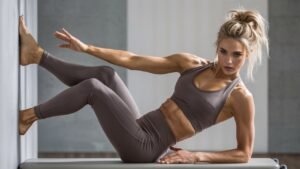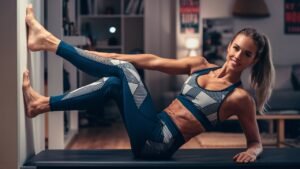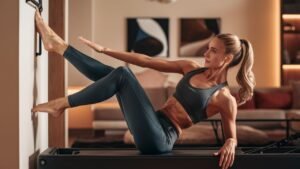Benefits of Pilates for Home Workouts
Practicing Pilates at home offers a multitude of benefits, making it an attractive option for individuals seeking a convenient and effective workout regimen. One of the primary advantages is the elimination of travel time to a gym, allowing for greater flexibility in scheduling and the opportunity to integrate exercise seamlessly into daily routines. This convenience is further complemented by the cost-effectiveness of home workouts, as there is no need for gym memberships or specialized equipment beyond a mat and some basic accessories.
Moreover, home-based Pilates workouts can be tailored to fit individual schedules and preferences, providing a personalized fitness experience. Whether you prefer to exercise in the morning, during a lunch break, or in the evening, the adaptability of a home workout ensures that you can maintain a consistent routine without the constraints of gym hours or class schedules.
Physically, Pilates is renowned for its ability to improve flexibility, strength, and posture. The controlled, precise movements inherent in Pilates help to enhance muscle tone and joint mobility, making it a low-impact exercise suitable for all fitness levels. Unlike high-intensity workouts that can be strenuous on the body, Pilates offers a gentle yet effective way to build core strength and promote overall physical well-being.
In addition to its physical benefits, Pilates is also known for its positive impact on mental health. Regular practice can lead to significant stress reduction, as the mindful nature of Pilates encourages deep breathing and focus, helping to calm the mind and alleviate tension. Improved concentration and mental clarity are other notable benefits, making Pilates an excellent choice for those looking to enhance their overall mental fitness.
Overall, the practice of Pilates at home provides a holistic approach to health and wellness, combining physical and mental benefits that can be easily incorporated into everyday life. The convenience, cost-effectiveness, and adaptability of home workouts make Pilates an ideal choice for individuals seeking a balanced and sustainable fitness routine.
Essential Equipment and Beginner-Friendly Exercises
Embarking on a Pilates journey at home requires minimal yet essential equipment to ensure effectiveness and safety. The foundational piece for any Pilates practice is a high-quality mat. A Pilates mat should be thicker than a standard yoga mat to provide adequate cushioning for your spine and joints during exercises. Look for a non-slip surface to maintain stability throughout your workout.
Resistance bands are another versatile piece of equipment that can enhance your Pilates routine. They come in various resistance levels, allowing you to choose the right intensity based on your current fitness level and goals. Additionally, incorporating a Pilates ring, also known as a magic circle, can add an extra layer of resistance and help engage specific muscle groups more deeply.
When selecting equipment, consider your personal fitness goals. A beginner might start with a soft resistance band and gradually progress to a medium or heavy band as strength improves. Similarly, a basic Pilates ring can be an excellent starting point, with the option to invest in more advanced tools as you advance in your practice.
Now, let’s explore some beginner-friendly Pilates exercises that can be easily performed at home:
1. The Hundred
Lie on your back with your legs in a tabletop position and arms by your sides. Lift your head, neck, and shoulders off the mat, extending your arms forward. Pump your arms up and down while inhaling for five counts and exhaling for five counts. Repeat for ten sets.
2. Single Leg Stretch
Lie on your back with your knees pulled towards your chest. Extend your right leg out at a 45-degree angle while holding your left knee. Switch legs in a smooth, controlled motion. Continue alternating for ten repetitions on each side.
3. Rolling Like a Ball
Sit on your mat with your knees bent and feet flat. Hold your ankles and balance on your sit bones. Inhale to roll back onto your shoulder blades, and exhale to return to the starting position. Ensure a smooth rolling motion by engaging your core and avoiding jerky movements. Perform five to eight repetitions.
These exercises focus on core strength, flexibility, and stability, forming the cornerstone of a beginner’s Pilates routine. As you gain confidence and strength, you can modify these exercises to increase their difficulty. For instance, add a resistance band to the Single Leg Stretch or incorporate the Pilates ring into the Hundred for an added challenge.
By investing in the right equipment and mastering these foundational exercises, you’ll be well on your way to experiencing the profound benefits of Pilates from the comfort of your home.




Leave a Comment